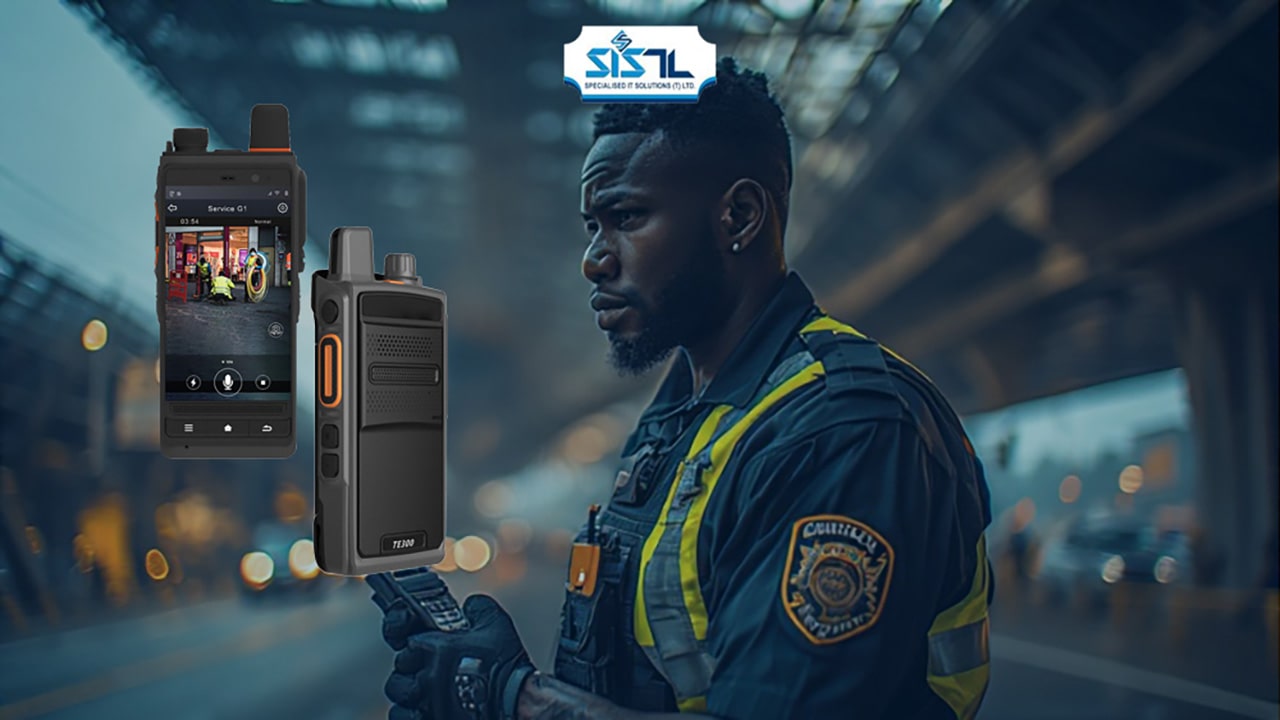
Secure and Connected: Push-To-Talk for East African Security
In the dynamic and often challenging security landscape of East Africa, reliable and instant communication is paramount. Traditional methods often fall short, plagued by coverage gaps, delays, and escalating costs. Push-To-Talk (PTT) technology emerges as a powerful solution, offering a robust and efficient communication network that directly addresses the critical pain points faced by security service providers in the region. This blog delves into the myriad benefits that PTT brings, transforming operations, enhancing safety, and ultimately bolstering the security infrastructure across East African nations.
The Communication Conundrum: Addressing Pain Points in East African Security
The security service industry in East Africa operates in a complex environment characterized by vast geographical distances, varying terrains, and often limited infrastructure. These factors contribute to significant communication challenges that can severely impact operational efficiency and the safety of personnel. Some of the key pain points include:
- Coverage Limitations: Traditional cellular networks may suffer from patchy or non-existent coverage in remote or underserved areas, precisely where security incidents might occur. This leaves field teams isolated and unable to communicate crucial information or request immediate assistance.
- Communication Delays: Relying on dialling numbers and waiting for connections can be time-consuming, especially in emergency situations where every second counts. Delays in relaying information can hinder response times and potentially escalate security threats.
- High Communication Costs: Frequent calls and SMS messaging can accumulate significant expenses, particularly for large security organizations with numerous field operatives. This can strain budgets and limit the frequency and detail of necessary communication.
- Lack of Instant Group Communication: Coordinating large teams during critical events becomes cumbersome and inefficient with traditional methods. Broadcasting urgent alerts or instructions to multiple personnel simultaneously is often difficult or impossible.
- Interoperability Issues: Different communication systems used by various security agencies or within a single large organization may not be compatible, hindering seamless collaboration and information sharing during joint operations.
- Security Vulnerabilities: Unencrypted communication channels can be susceptible to eavesdropping, potentially compromising sensitive information and jeopardizing security operations.
- Device Limitations: Standard mobile phones may not be ruggedized enough to withstand the harsh environmental conditions often encountered by security personnel in the field, leading to damage and communication breakdowns.
- Inefficient Dispatch and Coordination: Central control rooms may struggle to efficiently dispatch and coordinate field teams based on real-time information due to slow or unreliable communication channels.
These communication bottlenecks can have severe consequences, including delayed response times to security threats, increased risks for security personnel, reduced operational efficiency, and higher operational costs.
Push-To-Talk: A Technological Catalyst for Enhanced Security
Push-To-Talk technology offers a compelling suite of features that directly address the aforementioned pain points, providing a significant upgrade to communication capabilities within the East African security service industry. Here's how PTT acts as a catalyst for enhanced security:
- Instantaneous Communication: The core benefit of PTT is its near-instantaneous voice communication. With a simple press of a button, users can connect to individuals or predefined groups within seconds, eliminating the delays associated with traditional phone calls. This speed is critical in fast-evolving security situations where immediate information sharing is vital.
- Wide Area Coverage: Mode PTT solutions often leverage cellular or satellite networks, extending communication coverage across vast geographical areas, including remote regions where traditional networks may falter. This ensures that security personnel remain connected regardless of their location, enhancing their safety and operational reach.
- Cost-Effectiveness: PTT services typically operate on a subscription-based model with predictable monthly costs, often proving more economical than high volumes of voice calls and SMS messages. This cost-effectiveness allows security organizations to maintain constant communication without incurring exorbitant expenses.
- Group Communication Capabilities: PTT excels in facilitating seamless group communication. Security teams can be organized into talk groups, enabling instant broadcasting of alerts, instructions, and updates to all relevant personnel simultaneously. This is invaluable for coordinating responses during incidents, managing patrols, and disseminating critical information quickly.
- Enhanced Interoperability: Many mode PTT platforms are designed with interoperability in mind, allowing seamless communication between different devices and even integration with existing communication systems. This fosters better collaboration between various security agencies and within large organizations.
- Secure Communication Channels: PTT communication often incorporates robust encryption protocols, ensuring the confidentiality and integrity of voice and data transmissions. This protects sensitive information from unauthorized access and enhances the security of operations.
- Ruggedized Devices: PTT devices are often built to withstand harsh environmental conditions, including dust, water, and extreme temperatures. This durability ensures reliable communication even in challenging operational environments, minimizing device failures and communication breakdowns.
- Improved Dispatch and Coordination: PTT platforms often integrate with dispatch management systems, providing central control rooms with real-time location tracking of field teams, instant communication capabilities, and efficient task assignment. This enables better situational awareness, faster response times, and optimized resource allocation.
- Data Capabilities: Beyond voice communication, many advanced PTT solutions offer data capabilities such as GPS location tracking, text messaging, image and video sharing, and emergency alerts. These features provide valuable situational awareness and enhance the information available to both field teams and control centers.
- Emergency Features: Dedicated emergency buttons and priority communication channels are common features in PTT systems. In critical situations, personnel can instantly alert control rooms and other team members, ensuring rapid response and support.
Real-World Impact: Transforming Security Operations in East Africa
The adoption of Push-To-Talk technology is already demonstrating a transformative impact on security service operations across East African countries. Consider the following scenarios:
- Wildlife Protection: In vast national parks, anti-poaching units equipped with PTT devices can instantly report suspicious activity, coordinate patrols, and request backup in real-time, significantly enhancing their ability to protect endangered wildlife.
- Urban Security: Security patrols in bustling urban centers can use PTT for immediate communication regarding incidents, suspicious individuals, or traffic management, leading to faster response times and improved public safety.
- Logistics and Transportation Security: Security personnel escorting valuable goods can maintain constant contact with central command, providing real-time updates on their location and any potential threats, ensuring the safe and secure transit of assets.
- Event Security: During large public gatherings, security teams can utilize PTT for seamless coordination, crowd control, and rapid response to any security breaches or emergencies.
- Cross-Border Security: In joint operations involving security forces from neighboring countries, PTT systems with interoperability features can facilitate seamless communication and collaboration, enhancing regional security efforts.
Looking Ahead: The Future of PTT in East African Security
As technology continues to evolve, Push-To-Talk solutions are becoming even more sophisticated, offering enhanced features and greater integration capabilities. The future of PTT in the East African security service industry is likely to include:
- Enhanced Data Integration: Seamless integration with other security systems, such as video surveillance, access control, and alarm systems, providing a unified operational picture.
- Artificial Intelligence (AI) Integration: AI-powered features such as predictive analytics for threat detection, automated dispatch based on real-time data, and voice recognition for hands-free operation.
- Improved Location Services: More precise and reliable GPS tracking, including indoor positioning capabilities.
- Multimedia Communication: Enhanced capabilities for sharing high-resolution images, live video streams, and other multimedia content.
- Expansion of Hybrid Networks: Combining cellular, Wi-Fi, and satellite connectivity to ensure ubiquitous coverage and resilience.
Embracing the Power of Instant Connectivity
In the demanding and critical field of security services in East Africa, effective communication is not just a convenience; it's a necessity for ensuring the safety of personnel, the security of assets, and the overall stability of the region. Push-To-Talk technology provides a robust, reliable, and cost-effective solution that directly addresses the long-standing communication challenges faced by the industry. By embracing the power of instant connectivity, security organizations across East Africa can significantly enhance their operational efficiency, improve response times, and ultimately create a safer and more secure environment. The transition to advanced PTT systems is not just an upgrade; it's a strategic imperative for the future of security in the region.
6+
Years OfExperience
Connecting You To Smarter Solutions
Empower your fleet with revolutionary IoT solutions. Gain valuable insights from on-board footage with our AI vehicle camera. Optimize operations with real-time GPS vehicle tracking system. Enhance communication with instant Push-to-Talk functionality for your team, wherever they are.


Subscribe to our Newsletter
For the latest insights on AI Vehicle Cameras, GPS Tracking Solutions, Push-To-Talk technology, and exclusive industry updates







Post a comment